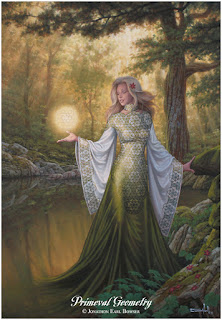Due to
my work schedule, I had realized that I hadn't given myself a chance
to wander the world of indie games as much as I would like. So in the
wee hours of the morning, I made sure that I took the time to see
what was out there and if I could find anything that would catch my
attention. Luckily there was a few who did, one going by the name of
Spirits.
Spirits,
created by indie developer Spaces to Play and released in February
2012, is a type of puzzle platformer which asks the player to assist
little spirits of leaves to make it across the environment and guide
them home. The story line that is provided is "Autumn is quickly
approaching, and the spirits of fallen leaves are setting out on
their journey home. Guide them by changing how the wind blows or by
rebuilding the ground”. While I was looking at the trailer, I was
struck by how much the little spirits reminded me of Princess Mononoke (1997) and Spirited Away (2001) along with some old European
descriptions of tiny forest spirits. It also brings back memories of
fables about mandrakes walking about, something that is visited in
modern story telling such as the Harry Potter series and Pan's Labyrinth (2006). The whimsical and adorable design of the tiny
spirits with a rich earth toned environment is certainly attention
grabbing but it did made me wonder where the creators got their
inspiration from. After emailing the folks over at Spaces to play, I
happily received a response from Game Design and Art Director Marek
Pilichta:
Dear
Dawn,
The
art direction had many different influences like swedish illustrator
John Bauer, polish master painter Jacek Malczewski and also japanese
legend Hayao Miyazaki. We wrote a detailed post on how we came up
with the art style on our blog
If
you have further question please let us know!
All
the best,
Marek
Plichta I was so
glad to see that I was at least right (slightly anyways) about the
European influence but it was wonderful to see some names to put with
it. Illustrator John Bauer (1882-1918) studied art in Stockholm
before entering the Royal Swedish Academy of Arts. He's known for his
illustrations for fairy tales between 1912-1915 with such pieces as
Tyr & Fenrir, and Trolls & Princess Tuvstarr. Jacek Malczewski (1854-1929), normally associated with the patriotic Young
Poland movement and considered as the father of Polish Symbolism,
studied under Leon Piccard and attended classes in Władysław
Łuszczkiewicz at the School of Fine Arts. Many of his works blended
patriotic themes and neo-romantic metaphors, especially after being a
bit influenced by the early works of Polish Romantic painter Artur Grottger (1837-1867). The last name on the list that Marek had
provided, Hayao Miyazaki (1941- ), absolutely delighted me since he
is the driving artistic force and creator of the films Spirited Away,
Princess Mononoke, Howl's Moving Castle and several others. Taking a
look at the link that Marek provided in the email was also fascinating since it shows the process and evolution of the little spirits within the game and an idea of how they were planning on having the tiny beings move within the game itself.
I was so
glad to see that I was at least right (slightly anyways) about the
European influence but it was wonderful to see some names to put with
it. Illustrator John Bauer (1882-1918) studied art in Stockholm
before entering the Royal Swedish Academy of Arts. He's known for his
illustrations for fairy tales between 1912-1915 with such pieces as
Tyr & Fenrir, and Trolls & Princess Tuvstarr. Jacek Malczewski (1854-1929), normally associated with the patriotic Young
Poland movement and considered as the father of Polish Symbolism,
studied under Leon Piccard and attended classes in Władysław
Łuszczkiewicz at the School of Fine Arts. Many of his works blended
patriotic themes and neo-romantic metaphors, especially after being a
bit influenced by the early works of Polish Romantic painter Artur Grottger (1837-1867). The last name on the list that Marek had
provided, Hayao Miyazaki (1941- ), absolutely delighted me since he
is the driving artistic force and creator of the films Spirited Away,
Princess Mononoke, Howl's Moving Castle and several others. Taking a
look at the link that Marek provided in the email was also fascinating since it shows the process and evolution of the little spirits within the game and an idea of how they were planning on having the tiny beings move within the game itself.
If you're interested in checking out the game, you can find it here:
store.steampowered.com - Spirits $9.99











